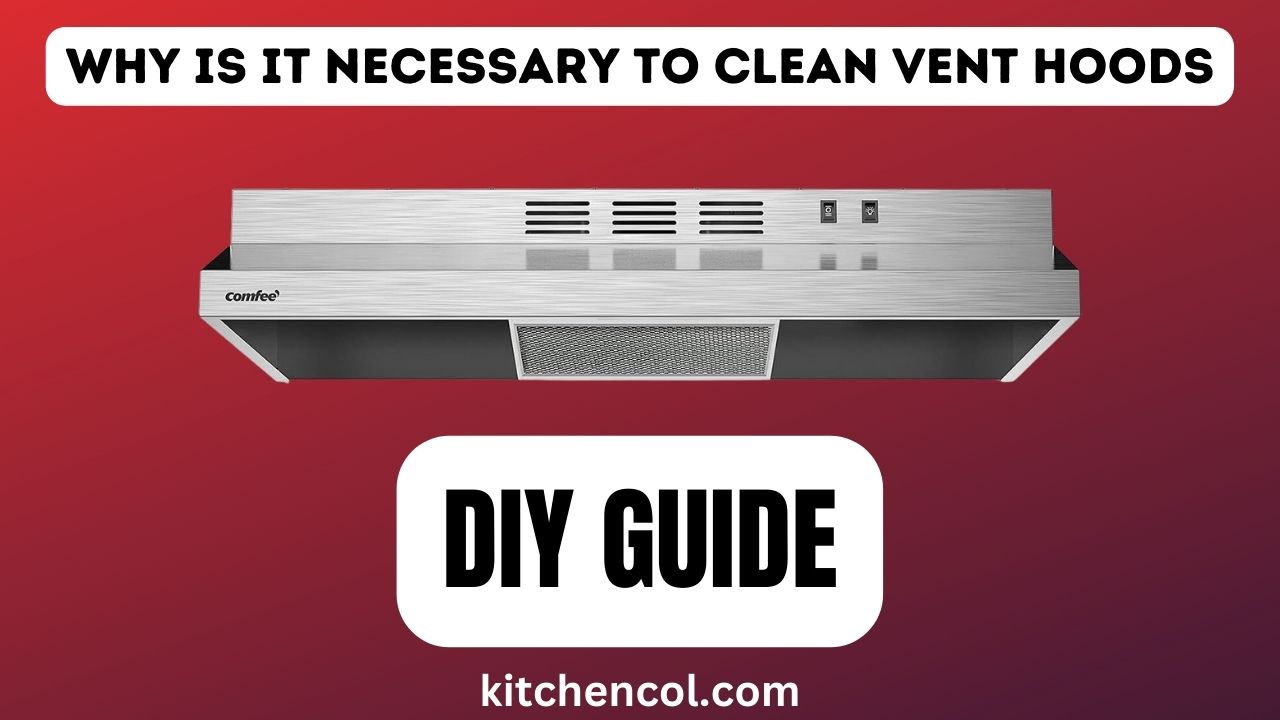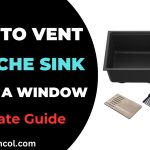Vent hoods, often overlooked but undeniably essential components of kitchens, industrial spaces, and commercial establishments, play a crucial role in maintaining air quality, fire safety, and operational efficiency. Despite their vital function, these mechanisms can quickly become a breeding ground for contaminants, posing potential hazards if left unattended.
In this article, we delve into the reasons why it’s absolutely necessary to clean vent hoods regularly. From the risks posed by accumulated grease and pollutants to the wide-ranging benefits of proper maintenance, we’ll explore why keeping these systems clean should be a top priority in both residential and commercial settings.
The Function of Vent Hoods
Vent hoods, also known as exhaust hoods or range hoods, serve as unsung heroes in various environments, ranging from home kitchens to industrial facilities. Their primary function goes beyond aesthetics, playing a pivotal role in maintaining a safe and comfortable atmosphere. Let’s delve into the key purposes these devices serve:
A. Removal of Smoke, Odors, and Airborne Contaminants:
- In Kitchens: In residential kitchens, vent hoods efficiently extract smoke, odors, and airborne particles that result from cooking processes. They prevent these elements from permeating the surrounding areas and help create a more pleasant cooking environment.
- In Commercial Settings: In commercial kitchens and restaurants, where high-volume cooking occurs, vent hoods are essential to prevent the buildup of cooking-related emissions. These hoods keep the air clean for staff and customers alike.

B. Prevention of Grease Buildup:
- Grease Accumulation: Grease particles are emitted into the air during cooking and may land on surfaces. Without proper ventilation, these particles can accumulate on walls, ceilings, and equipment, posing both a fire hazard and a sanitation concern.
- Capturing Grease: Vent hoods are equipped with filters that capture grease and oil particles, preventing them from escaping into the surrounding area. This not only maintains a cleaner environment but also mitigates the risk of fire.
C. Enhancement of Indoor Air Quality:
- Health and Comfort: Clean air is essential for the health and comfort of occupants. Vent hoods help remove pollutants and improve indoor air quality by expelling contaminants to the outdoors.
- Allergen Reduction: In addition to removing cooking-related particles, vent hoods can help reduce allergens and irritants, benefiting individuals with respiratory conditions.
In essence, vent hoods act as a barrier between the cooking process and the surrounding environment. Their effective operation ensures that indoor air remains fresh, free from pollutants, and safe to breathe. Whether in a home kitchen, a bustling restaurant, or an industrial plant, the proper functioning of vent hoods is paramount to maintaining a healthy and hazard-free atmosphere.
Common Contaminants and Hazards
While vent hoods play a pivotal role in maintaining air quality and safety, they can also become potential sources of hazards if not properly maintained. Here, we explore the common contaminants that accumulate within vent hoods and the associated risks they pose:
A. Contaminants that Accumulate in Vent Hoods:
Grease and Oil Buildup:
- Cooking processes release grease and oil particles into the air.
- These particles can adhere to surfaces within the vent hood and its components.
Smoke Particles:
- Smoke generated during cooking can contain particulate matter and odorous compounds.
- Without proper ventilation, smoke particles can settle within the vent hood.
Dust and Debris:
- Airborne dust and debris, along with environmental pollutants, can enter the ventilation system.
- Over time, these particles can accumulate and impede proper airflow.
B. Potential Hazards of Dirty Vent Hoods:
Increased Fire Risk:
- Grease buildup within vent hoods is highly flammable and can lead to fires.
- A spark or high heat can ignite accumulated grease, posing a significant fire hazard.
Impaired Ventilation:
- Contaminants like grease can obstruct ventilation pathways.
- Impaired ventilation reduces the efficiency of the system, leading to poor air quality.
Health Concerns Due to Poor Air Quality:
- Inadequate venting allows cooking-related pollutants to linger indoors.
- Poor indoor air quality can exacerbate allergies, respiratory issues, and general discomfort.
Decreased System Efficiency:
- Accumulated grease and debris can strain the ventilation system.
- This strain can lead to increased energy consumption and decreased overall system efficiency.
Understanding these potential hazards highlights the importance of regular vent hood maintenance. Neglecting to clean and maintain vent hoods can lead to dire consequences, from elevated fire risks to compromised air quality. By addressing these hazards through routine cleaning and upkeep, occupants can enjoy a safer, healthier, and more comfortable environment.
Benefits of Regular Vent Hood Cleaning
Maintaining clean and well-functioning vent hoods goes beyond aesthetics – it directly impacts safety, air quality, and overall operational efficiency. Let’s delve into the array of advantages that come with regular vent hood cleaning:
A. Improved Fire Safety:
Grease Buildup Prevention:
- Regular cleaning prevents the accumulation of flammable grease in the hood and ducts.
- Reduces the risk of grease-related fires, which can spread rapidly and cause extensive damage.
Enhanced Safety for Occupants:
- Clean vent hoods minimize the chances of fire hazards, safeguarding the environment for residents, staff, and customers.
B. Enhanced Air Quality:
Removal of Airborne Contaminants:
- Regular cleaning removes particles, smoke, and odors that can degrade indoor air quality.
- Helps maintain a healthier environment by preventing the recirculation of pollutants.
Respiratory Health Benefits:
- Cleaner air reduces exposure to allergens and irritants, benefiting individuals with respiratory conditions.
C. Energy Efficiency:
Improved System Performance:
- Clean vent hoods allow for efficient airflow, enhancing the performance of ventilation systems.
- Ensures that the system doesn’t have to work harder than necessary to maintain airflow.
Potential Energy Savings:
- An efficiently operating vent hood consumes less energy, leading to cost savings over time.
D. Prolonged Equipment Lifespan:
Prevention of Wear and Tear:
- Regular cleaning prevents the buildup of corrosive substances that can damage components over time.
- Extends the lifespan of the vent hood and associated equipment.
Cost-Effectiveness:
- Preventive maintenance expenditures are more cost-effective than dealing with replacements or repairs brought on by negligence.
Regular vent hood cleaning translates into a safer, healthier, and more efficient living or working environment. By prioritizing maintenance, individuals can minimize fire risks, maintain superior air quality, conserve energy, and extend the lifespan of their ventilation systems. Whether in residential kitchens, bustling restaurants, or industrial settings, the benefits of regular cleaning are undeniable and far-reaching.
Importance in Different Settings
The significance of clean vent hoods extends across various settings, from residential kitchens to commercial establishments and industrial facilities. Let’s explore how the importance of regular vent hood cleaning varies in these diverse contexts:
A. Residential Kitchens:
Cooking Environment:
- Clean vent hoods ensure a comfortable and odor-free cooking experience at home.
- Removes cooking odors, smoke, and airborne particles, enhancing the overall culinary environment.
Property Value:
- Well-maintained vent hoods contribute to a visually appealing kitchen, positively impacting property value.
- Potential homebuyers appreciate functional and clean ventilation systems.
B. Commercial Kitchens:
Compliance with Regulations:
- Clean vent hoods are essential for compliance with health and safety regulations in the food service industry.
- Regular cleaning ensures adherence to codes that govern air quality and fire safety.
Customer Experience:
- Clean and efficient vent hoods create a more pleasant dining experience for customers.
- Ensures that the ambiance of the restaurant remains inviting and comfortable.
C. Industrial Facilities:
Operational Efficiency:
- In industrial settings, vent hoods play a pivotal role in maintaining efficient manufacturing processes.
- Prevents the buildup of contaminants that can affect production and equipment performance.
Regulatory Compliance:
- Many industries are subject to regulations governing emissions and air quality.
- Clean vent hoods help industries meet these regulations and avoid potential penalties.
Worker Safety:
- Clean vent hoods contribute to a safer work environment by reducing fire risks and exposure to harmful particles.
The importance of regular vent hood cleaning transcends the boundaries of different settings. Whether it’s a home kitchen, a bustling restaurant, or a complex industrial facility, clean vent hoods are essential for maintaining a safe, comfortable, and efficient environment. Prioritizing maintenance in these various contexts not only enhances the overall experience but also contributes to compliance, safety, and long-term cost savings.
The Cleaning Process
Maintaining clean and efficient vent hoods involves a systematic cleaning process that ensures optimal performance and safety. Let’s delve into the steps of the vent hood cleaning process:
A. Inspection and Assessment:
Visual Examination:
- Inspect the vent hood for visible signs of grease buildup, debris, and damage.
- Identify any areas requiring special attention, such as clogged filters or damaged components.
Evaluation of System Performance:
- Check the airflow and ventilation performance of the vent hood.
- Ensure that the system is functioning properly before cleaning begins.
B. Disassembly and Removal of Components:
Turn Off Power:
- Disconnect power to the vent hood to ensure safety during disassembly.
Remove Filters and Baffles:
- Take out filters and baffles that capture grease and other contaminants.
- Clean or replace filters if necessary.
Detach Ductwork:
- Disconnect the ductwork to access and clean the interior components.
C. Cleaning and Degreasing:
Grease Removal:
- Use appropriate degreasing agents to clean filters, baffles, and interior surfaces.
- Remove built-up grease and oil to prevent fire hazards.
Interior Cleaning:
- Clean the interior of the vent hood and ducts using brushes, scrubbers, and degreasing agents.
- Ensure that all surfaces are thoroughly cleaned to maintain optimal airflow.
D. Reassembly and Testing:
Replace Components:
- Put back filters, baffles, and any removed components.
- Ensure that all parts are properly secured.
Reconnect Ductwork:
- Reattach the ductwork and ensure a proper seal to prevent air leakage.
Test System:
- Turn on the vent hood and test its performance.
- Check for proper airflow, noise levels, and overall functionality.
E. Professional Cleaning:
Complex Systems:
- In commercial and industrial settings, consider hiring professionals for complex systems.
- Professionals have the expertise and equipment to thoroughly clean intricate ventilation systems.
F. Recommended Cleaning Frequency:
Residential Kitchens:
- Cleaning every 3 to 6 months is generally recommended for home kitchens.
Commercial Kitchens:
- High-volume kitchens may require more frequent cleaning, often monthly.
Industrial Facilities:
- Cleaning frequency varies based on industry standards and regulatory requirements.
By following this comprehensive cleaning process, individuals can ensure that their vent hoods function optimally, promoting safety, air quality, and energy efficiency. Regular cleaning not only prevents hazards but also extends the lifespan of the vent hood and associated components, ultimately contributing to a healthier and more efficient living or working environment.
Also Read: Is Water Dispenser Good for Health-A Comprehensive Guide
Final Words
The necessity of cleaning vent hoods cannot be overstated. Whether in residential kitchens, bustling restaurants, or industrial facilities, these seemingly inconspicuous devices play a pivotal role in ensuring fire safety, maintaining air quality, and promoting overall efficiency.
The accumulation of grease, smoke particles, and contaminants poses significant hazards, from heightened fire risks to compromised indoor air quality. Regular vent hood cleaning brings a multitude of benefits, including enhanced safety, improved air quality, energy efficiency, and prolonged equipment lifespan.
As we’ve explored, the importance of vent hood maintenance transcends different settings, impacting occupants’ health, comfort, and even regulatory compliance. By following a structured cleaning process and adhering to recommended frequencies, individuals can reap the rewards of a safer, healthier, and more productive environment.
Prioritizing regular vent hood cleaning is a proactive step towards safeguarding lives, preserving property, and promoting optimal operational performance.

My name is Manan Bukhari and I am an expert in reviewing kitchen products for years. I have a passion for testing multiple gadgets especially related to home & kitchen. I love to spend my free time in resolving issues if I face some in any of my daily use things. I have fixed multiple gadgets of my home on my own without any assistance and that thing gave me confidence to make a blog on troubleshooting of items that are for daily use to assist you folks. Even my wife praises me for having such talent. I always explore new machines on my own because this thing fascinates me.



